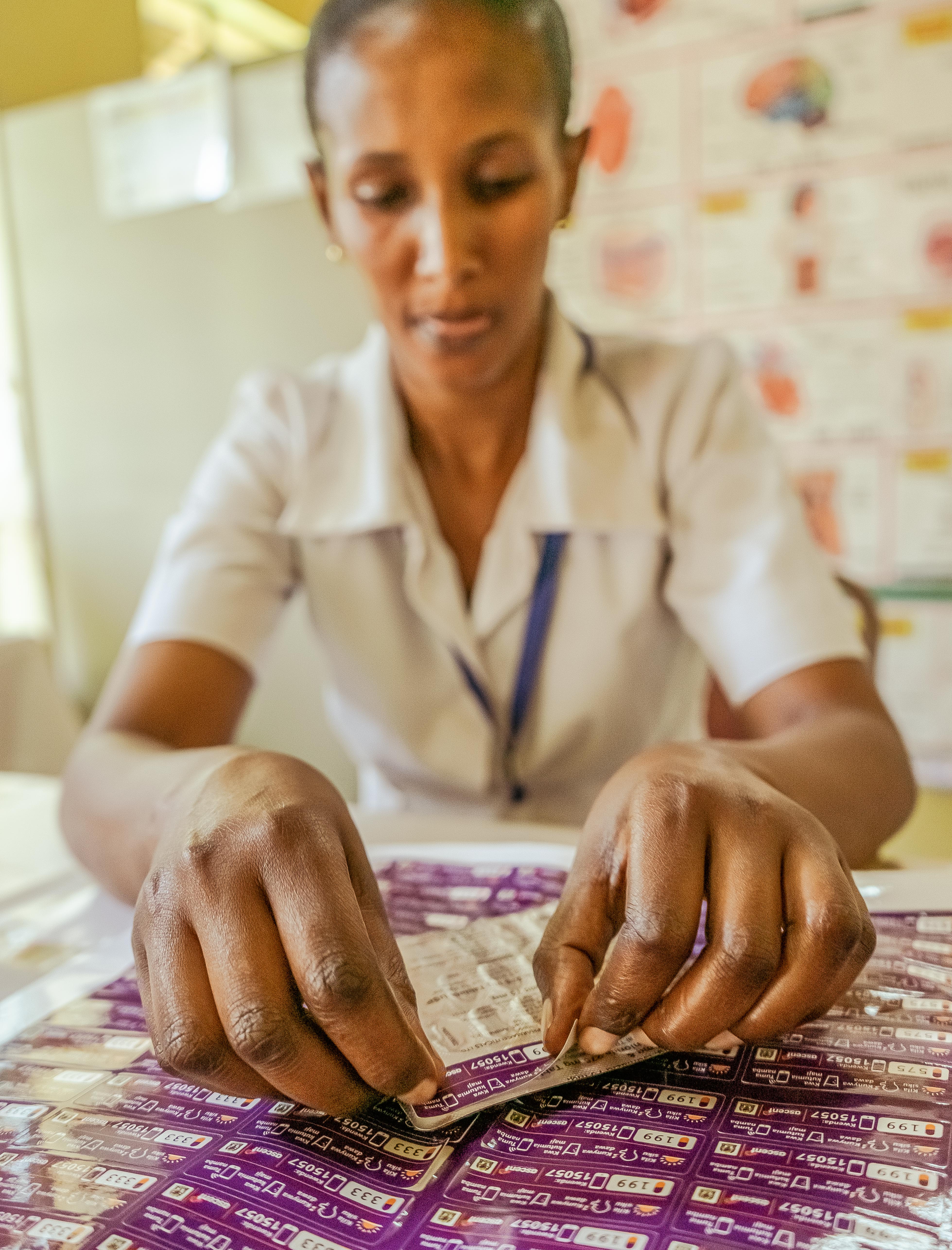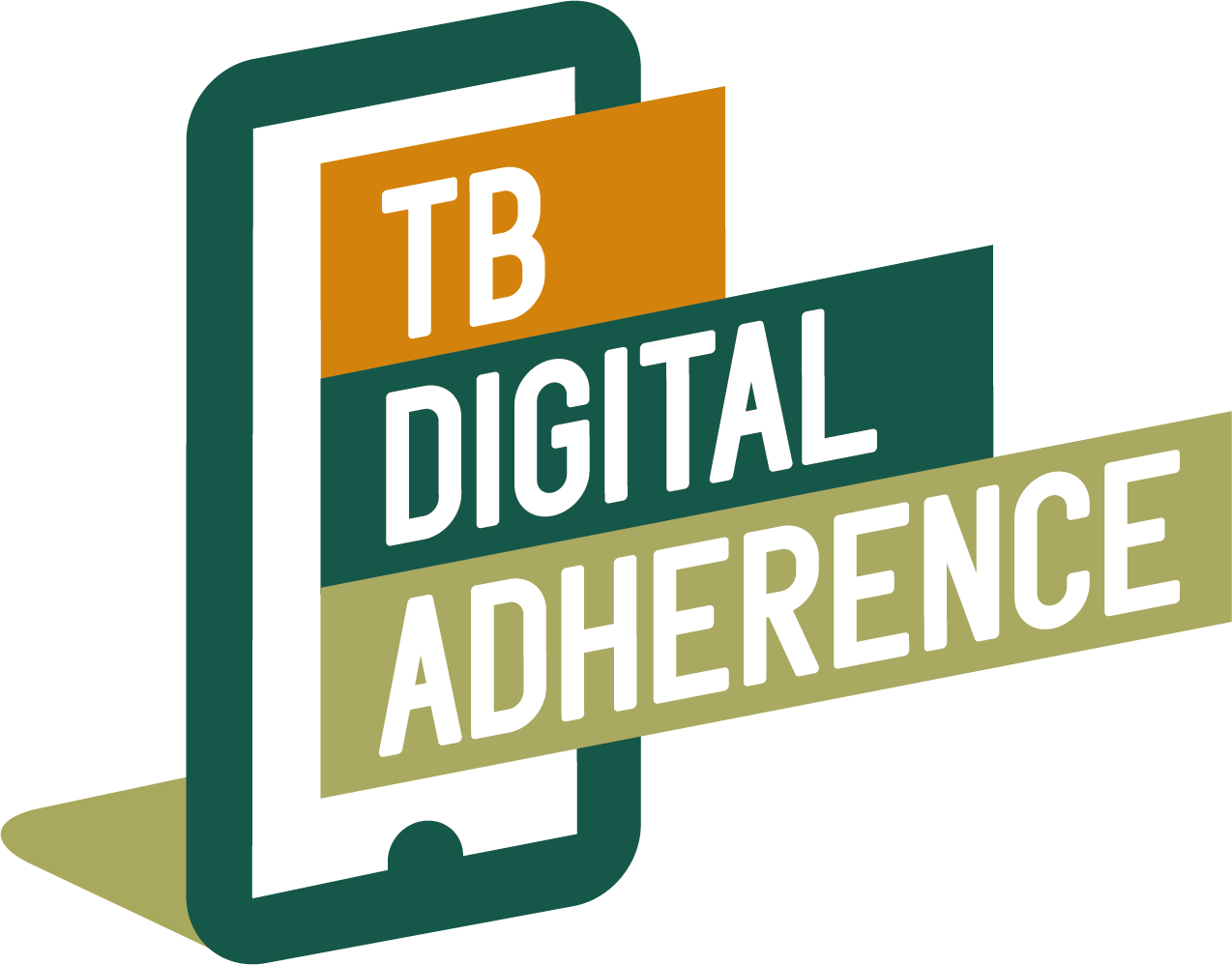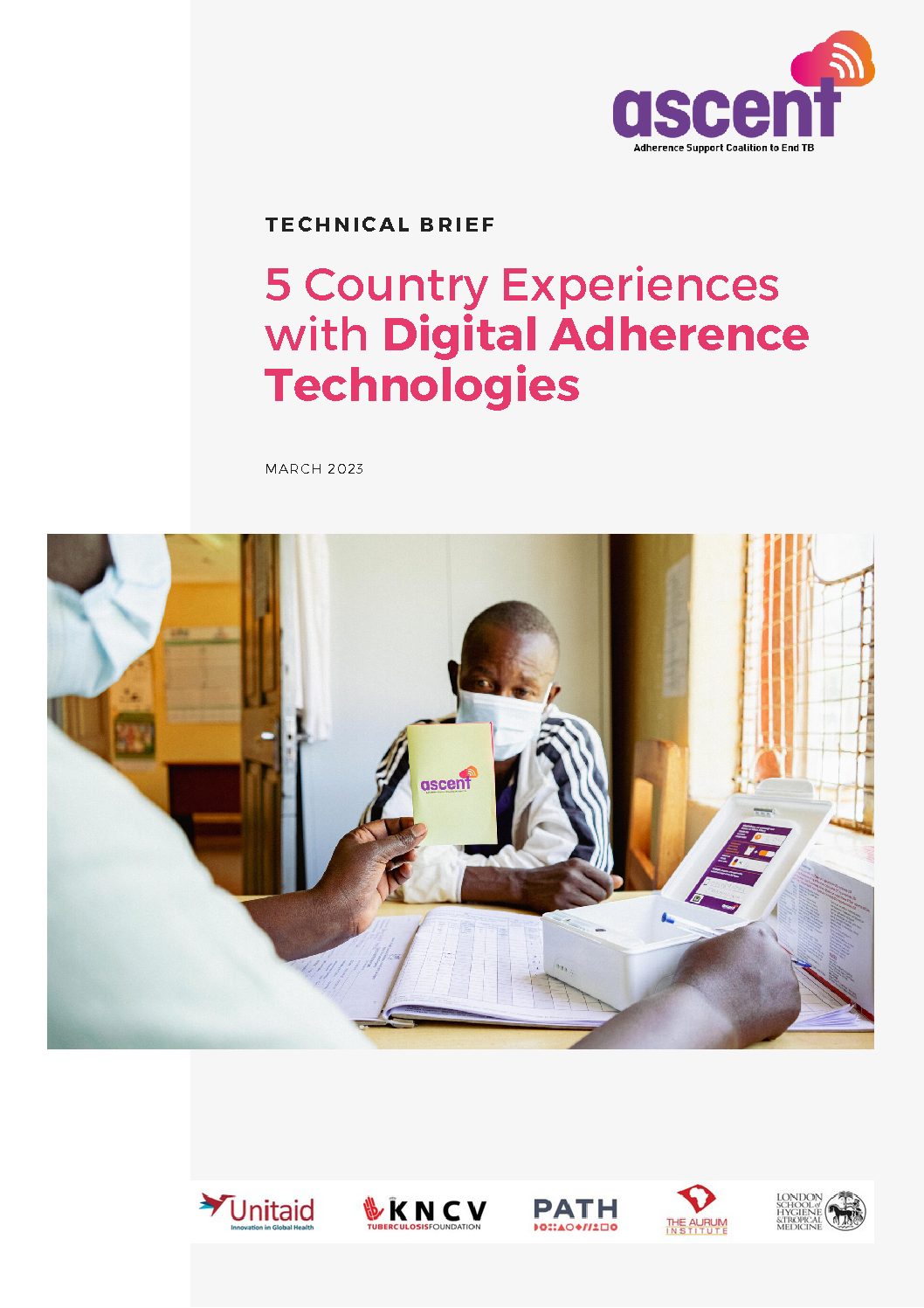Technical Brief:
Five Country Experiences with Digital Adherence Technologies
Digital Adherence Technologies (DATs) are designed to support people infected with TB in taking their medication. Compared with the traditional directly observed treatment (DOT) approach, these tools allow people to take their medication at a place and time convenient to them while remaining connected to their healthcare provider. DATs provide real-time information to the healthcare provider, offering the opportunity for healthcare providers to follow-up and support the individual during treatment and identify people who need additional care and support.

Medication label approach being prepared by a healthcare provider
Objectives of the Technical Brief
From January 2021 to December 2022, the Unitaid funded ASCENT (Adherence Support Coalition to End TB) project supported over 17,000 people during their TB treatment using digital adherence technologies in Tanzania, Ethiopia, South Africa, Ukraine, and the Philippines. Healthcare providers in more than 230 health facilities were trained on the use of 3 technologies as a tool to support their patients during the completion of treatment, namely the medication sleeve/label (99DOTS), the smart pill box (MERM) or video supported treatment (VST). These three DATs were linked to an online adherence platform (the Everwell Hub) which is accessible via tablet or computer by the healthcare provider to provide remote support and identify patients who may need additional support.
Based on the experience of implementing digital adherence technologies at scale in five different contexts, this technical brief serves to highlight and summarize the ASCENT project implementation experiences with the technologies before the final research from the ASCENT project is published. The technical brief is structured around the following considerations:
- Ease for persons with TB to use the technology
- Ease for healthcare providers to use the technology
- Accessibility of the technology for people with TB
- Ease of technology implementation and continued management

